EXTENT OF DEVASTATION INDESCRIBABLE AT THIS TIME. Â OVER 70 HOMES COMPLETELY DESTROYED. Â THOUSANDS OF ACRES OF FOREST LEVELED. Â MASSIVE HABITAT LOSS IN 38 MILE LONG PATH OF DESTRUCTION. Â THREAT OF MASSIVE FOREST FIRE LOOMS FROM NEWLY CREATED “FIRE LOAD” OF THOUSANDS OF ACRES OF DEAD LUMBER NOW SITTING IN THE WAKE OF THE TORNADO JUST AT THE BREAK OF THE SUMMER SEASON. NOW IS THE TIME FOR THE ENTIRE TOWN TO RISE AND DEMAND FROM THE FEDERAL AND STATE GOVERNMENTS EVERY BIT OF HELP POSSIBLE TO REDUCE ANY FURTHER RISK OF DAMAGE FROM FIRE AS WELL AS DAMAGE FROM ANY Â WEATHER IN THE FORM OF IMMEDIATE AID FOR ALL PROPERTIES, BUSINESSES AND HOMES IN THE EFFECTED AREAS .
Special edition to the Sanguine Root- Â Staff writer Sean Solomon covers the devastating June 1st 2011 tornado that destroyed much of his hometown of Monson Massachusetts.
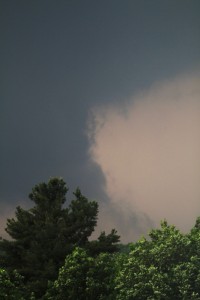
This is the tornado. Â The funnel cloud is clearly captured in Brian’s picture (above), taken just two miles south of the tornado. The funnel is whirling from left to right of the picture, whipping up such that the violent part of the tornado is not as dark as the top portion, as it has a rotation of extreme speed and a force that is unpredictable. Â When he took this photo, there was no way of knowing if this extremely dangerous high intensity rotational super-cell was headed his way. Â If it was, it would be a matter of minutes before it would tear apart the house and all of the vegetation around it. The path of the tornado remained just two miles north of the family home.
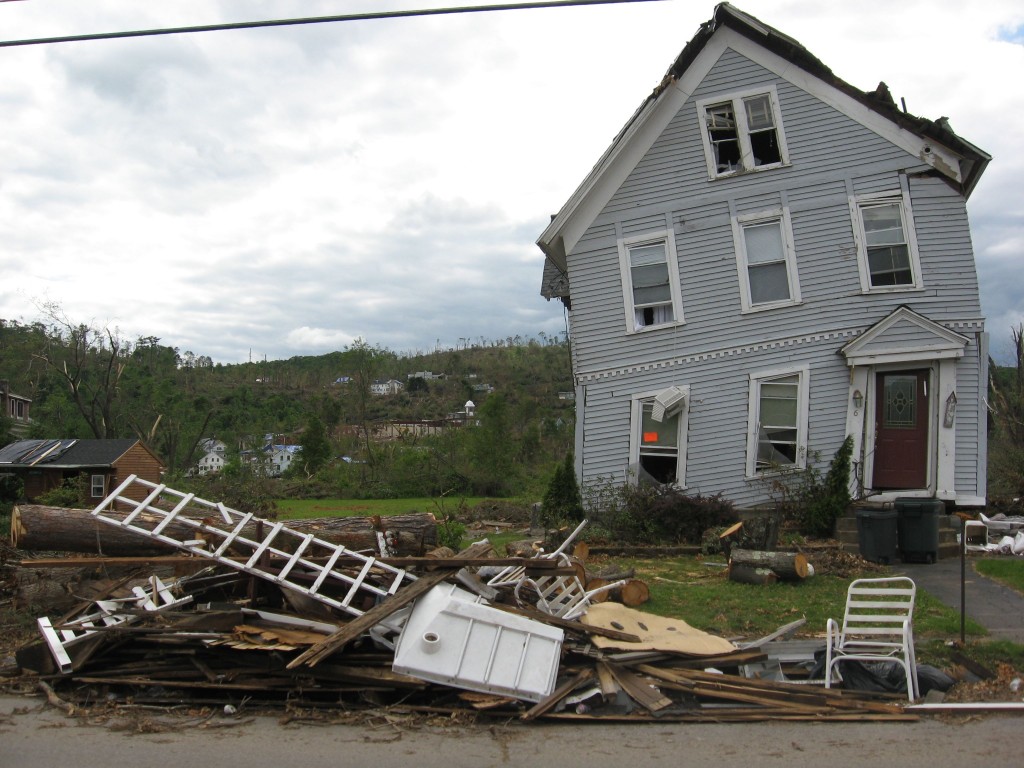
This is Bethany Street. It was a charming tree-lined street lined with gracious Victorian- era houses.  This one was pulled off of its foundation and left to crumple.  The red placard was pasted on declaring its dangerous state. Unless every part of the house could be safely dismantled, stored and rebuilt on a new foundation with  new structural members, this house is ruined forever.  Much of the historic fabric of Monson is at stake. Ideally, the ruined homes could be re-built using salvaged cornices and door frames, and the size and placement of the windows, the proportions of the roof pitch and the cedar siding could all be replicated.
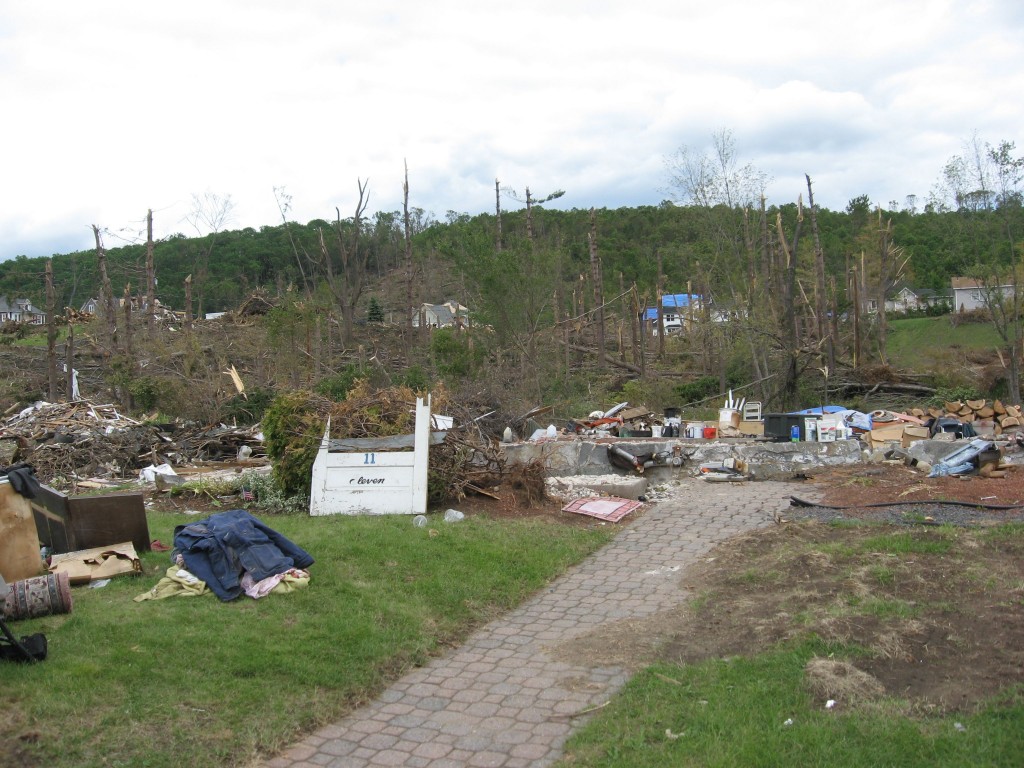
This house was right across the street.
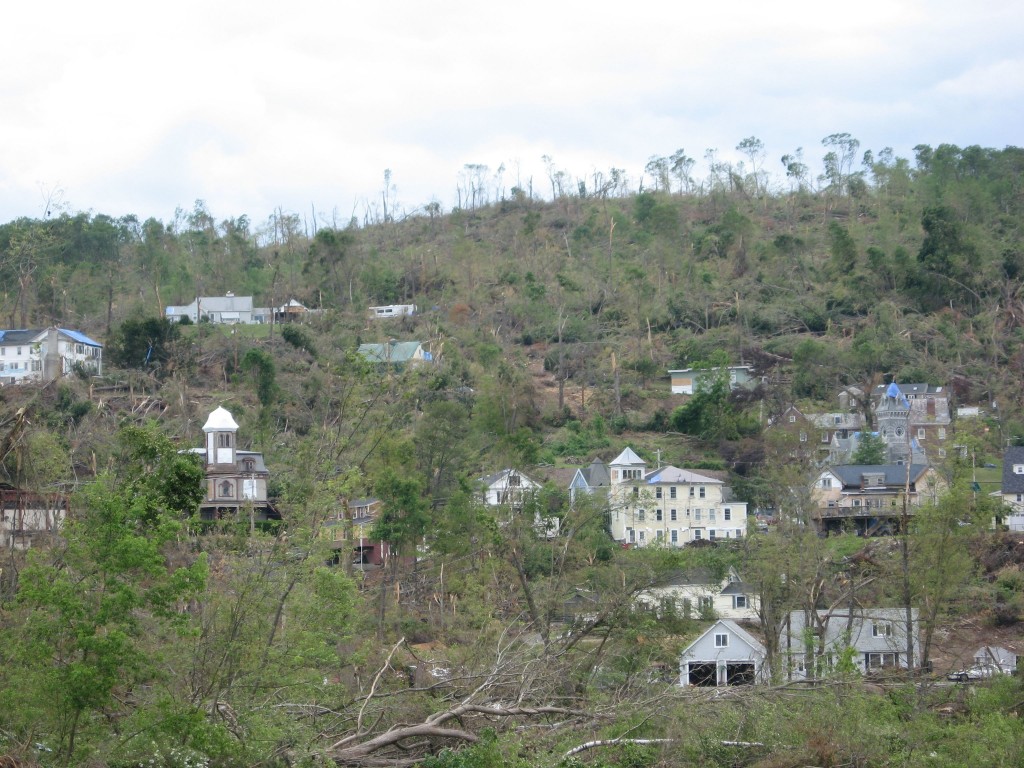
Here is a view of the remains of the town.  The path of the tornado  was about 1/4 of a mile wide here. It went up and down steep forested hills for 38 miles.  Its wake of destruction appears more vigorous at the bottom of the hills .  The next hill it climbed, it narrowed a bit and then widened to 1/2  mile at the bottom on its eastward path.
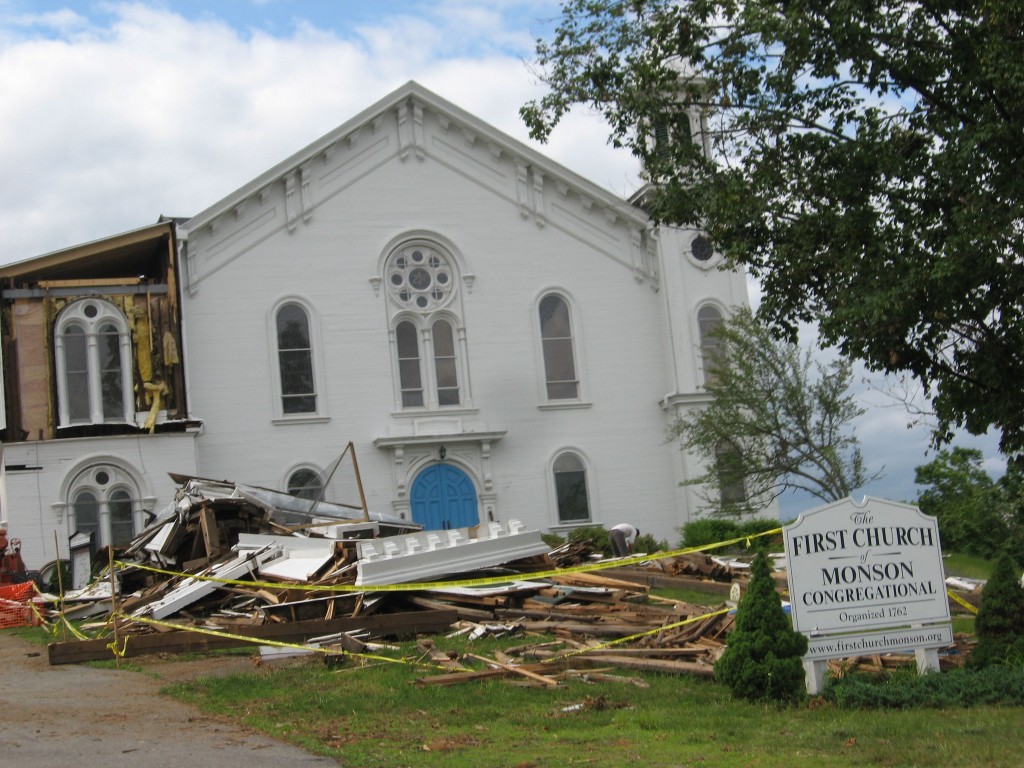
The iconic New England First Church Of Monson, with its steeple pulled right off. The lighting rod of the steeple pierced the wooden sign near the left hand yew.  A volunteer building contractor was going through the rubble, pulling out the  architectural elements for storage and re-use in a hopeful replication of the steeple. I suggested to him that the ‘blueprints’ for the envelope of the new steeple were right there in the pile. He said they hope to reuse as much as possible in the re-construction.
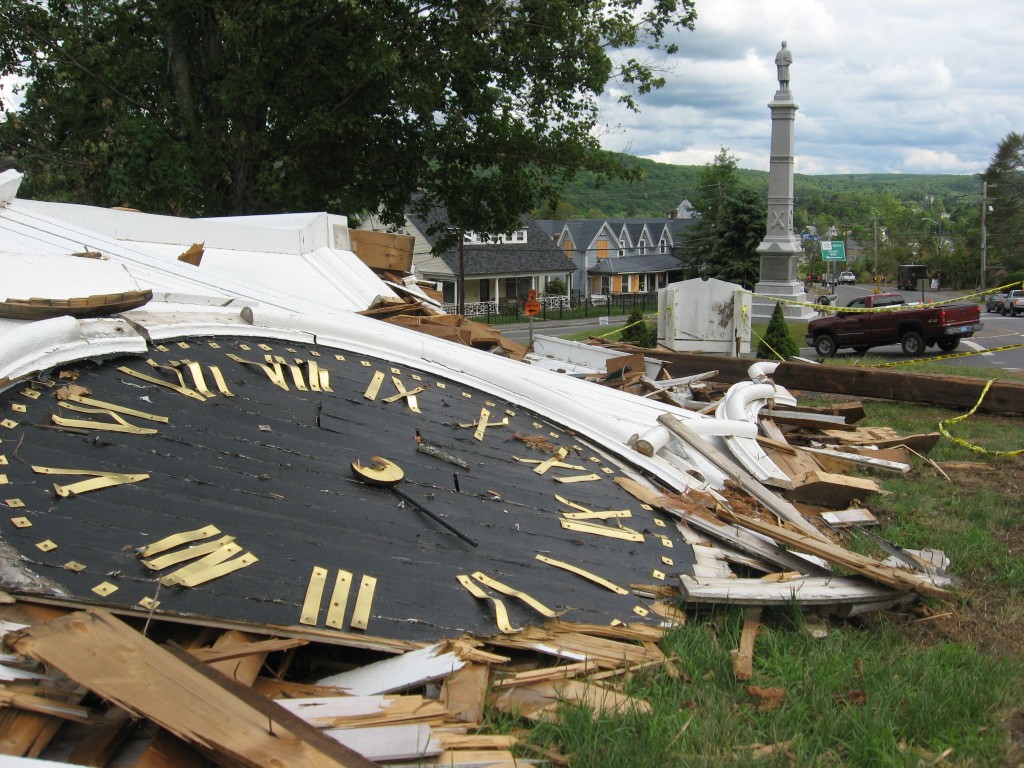
The volunteer said that the clock mechanisms they found were intact. Â The hour hand remains at the time of the tornado. On my bike rides to school, I would use this clock to see how late I was.
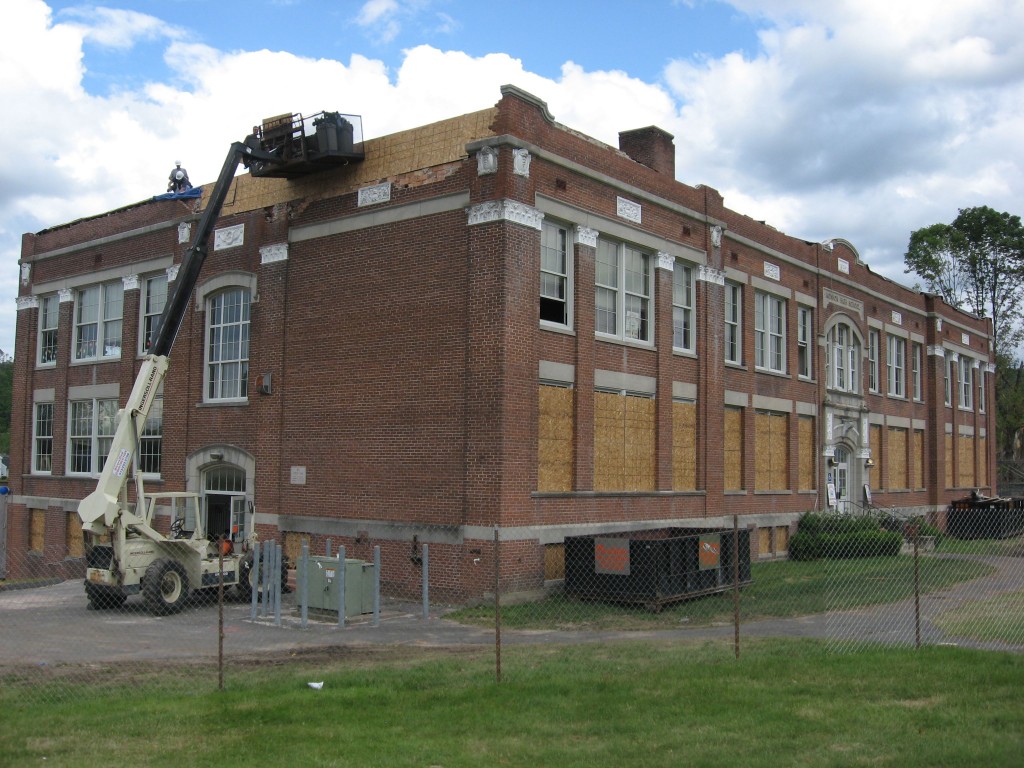
My old school. Â Since converted to the town offices, the future of the building is still uncertain. Â At the town meeting, we were told it awaits engineering reports.
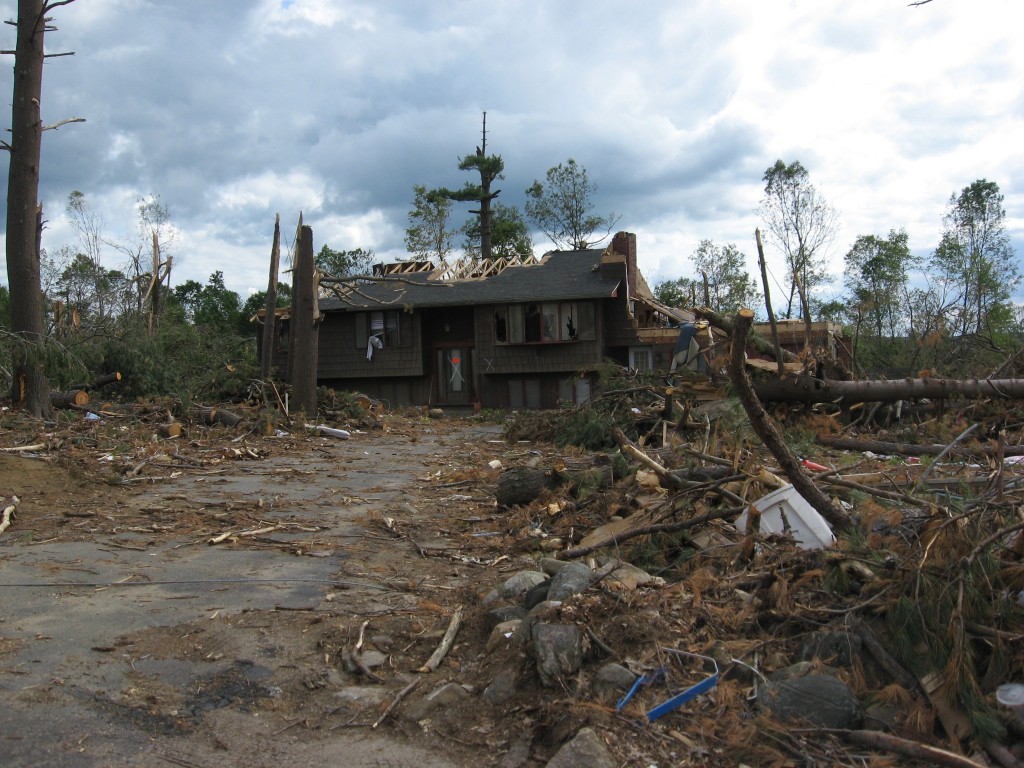
A home I visited in childhood.
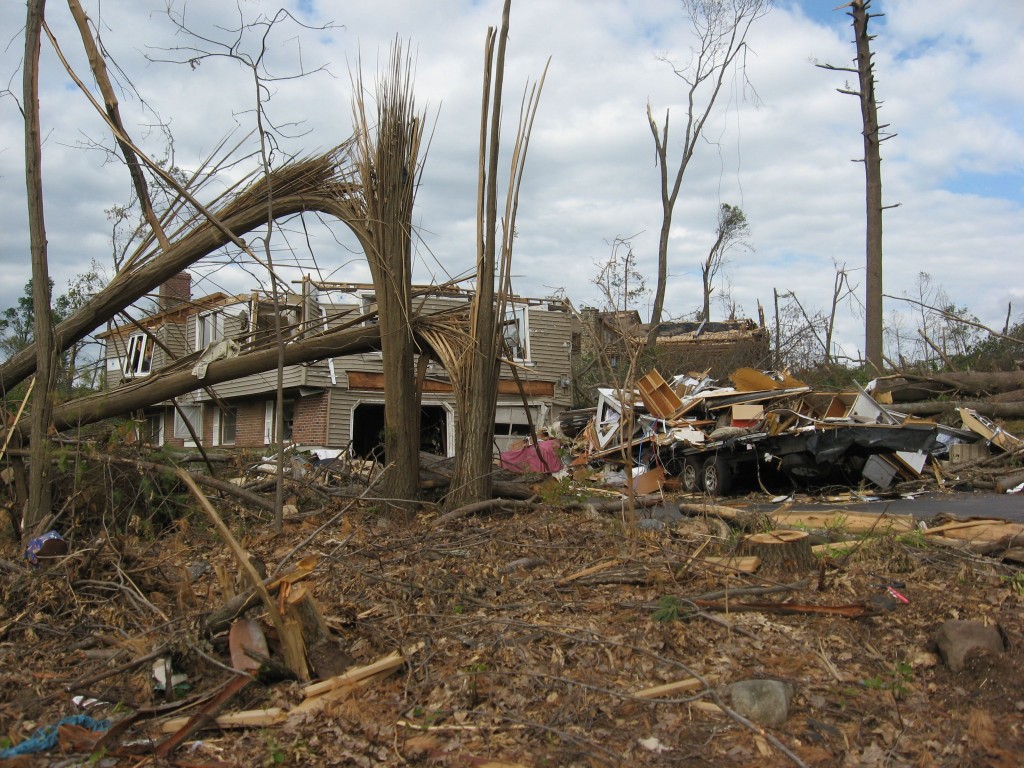
The house across the street from the house pictured above.
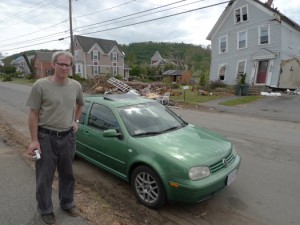
- The destruction of homes and property, and lives and livelihoods is impossible to calculate. We must also account for the destruction of the forests of Monson, and the land effected: What are the effects on the forests, and what are the long term effects? Â It was said at the town meeting that one of the biggest losses people voiced was the loss of their trees. Â Houses can be replaced but mature trees cannot be any time soon.
- In the aftermath, there are many immediate things to grapple with, Food, clothing, shelter, mental well-being, Insurance, State and Federal aid.  On accounting for the forests, one looming immediate issue is the fire load.  The thousands of acres of dead brush and trees left behind.  There is a ban on controlled burning, but in the coming months as summer heats up and things dry out, whats to stop a lightning strike, a tossed cigarette or an illegal fire?  Is there a plan in place to minimize the fire load? Is there political will?  Is this a job for a massive entity such as the Army Corps?  If these dead trees and shrubs, the fire load, ignites, what will this conflagration do to the town?  The town will need  to be organized and vocal on a civic and grassroots level and to keep asking for help on this and many other issues.  At this point there are more questions than answers.



This is a great on-the-ground report of here Monson stands currently. Hopefully many of the pieces can be re-used.
It would be good to see that the homes that are re-built reflect the charm of the ones lost. Many of the older homes in Monson were built with a regard for the setting, with broad porches and steep roofs that allowed snow to slide off. In fact most of these houses were built so well that they survived the tornado. I noticed that the older houses that did not survive were either in poor repair, or had prior foundation problems.
It’s hard to imagine Monson not being there. So sad! It’s amazing how people rise to the need so you’ll be o.k. ….after a long time. Penny
Penny, thankfully, most of Monson is still here. I think that the town will be a stronger community from this event. Monson will be more Monson than ever. It is heart-warming to see people rise to the occasion and lend a hand in this time of need. While we have lost trees and homes, businesses and town offices, there is much to gain in this time where the town must reflect upon what is truly important in what the town is.
This is devastatingly informative – Please consider listing groups collecting or working to help the recovery for those wo might want to help.
Roger Ingraham
Roger, That is a good point-The town of Monson website may be a good place to start. I know the Palmer Journal also listed recovery efforts. As far as I know, all donations at this point should be monetary. Anyone have any other suggestions?
An excellent description of not just the physical destruction but of the people who are intertwined with the damage and the long term effects of the tornado!
Thank-you Connie. Noone could have ever imagined this happening, but now that it has the town has become intertwined in its recovery. In the long term, I hope that Monson will have a strong character.
Some of your pictures are better than what the news has online. Good work!
The news always seems to mess up the story. Let the townspeople speak. People who really care, and have to address the details and the mess of the recovery. I saw my childhood ripped apart and I reported on that, the streets, the homes, the trees and the school. I edited my photos for publication, and I appreciate the support that I have received from friends and family.
Wondering how forests will respond to the clearing that occurred. Will Bittersweet take over, or will new plants respond to increased light?
Excellent question. In fact this very topic has been rolling around inside my head. I decided to drive through the Brimfield State Forest, which I saw on a satellite photo was heavily damaged. I have created a new post devoted to this very topic. The Asiatic Bittersweet is extremely invasive in New England, and it poses a threat to forests, both existing, emerging or recovering from logging.